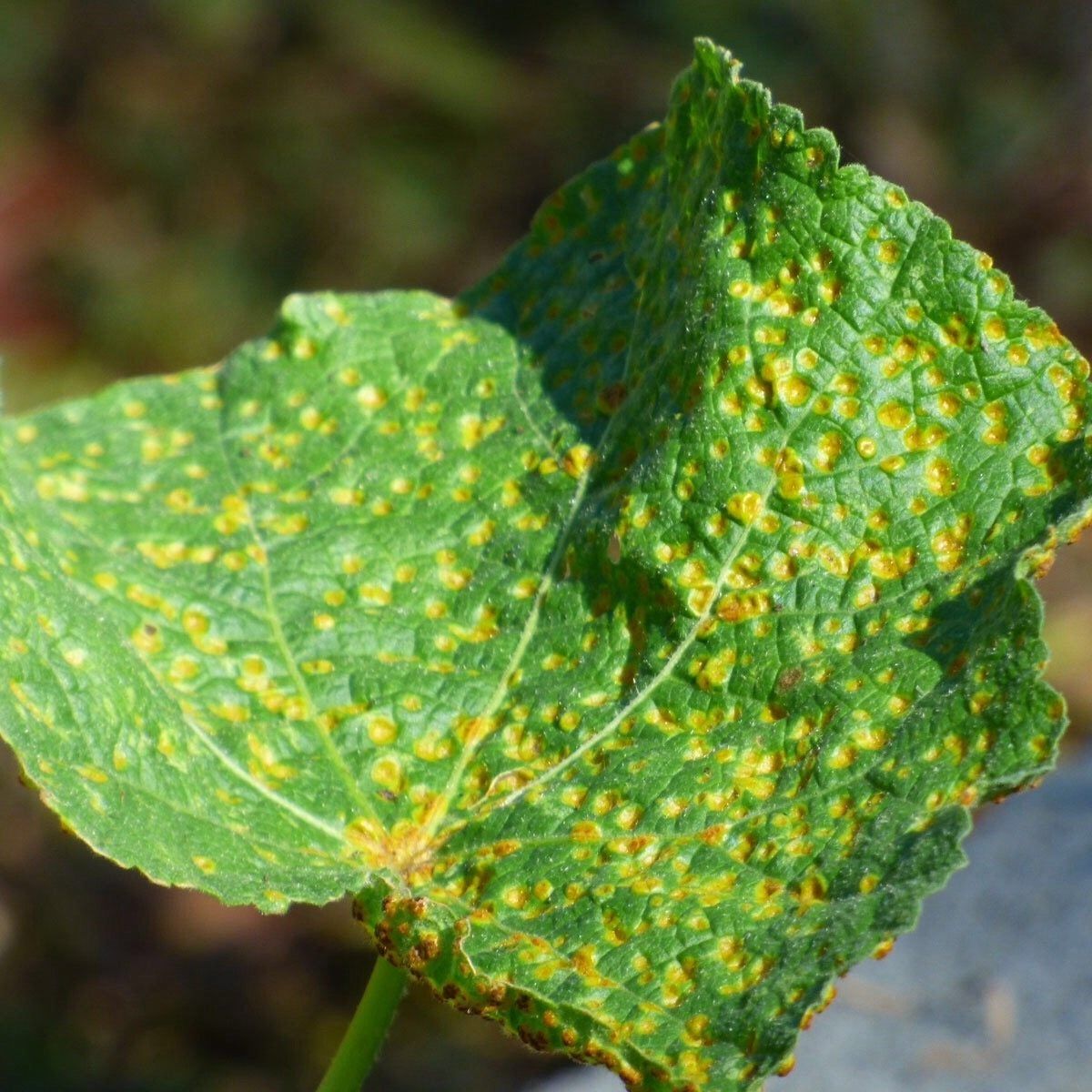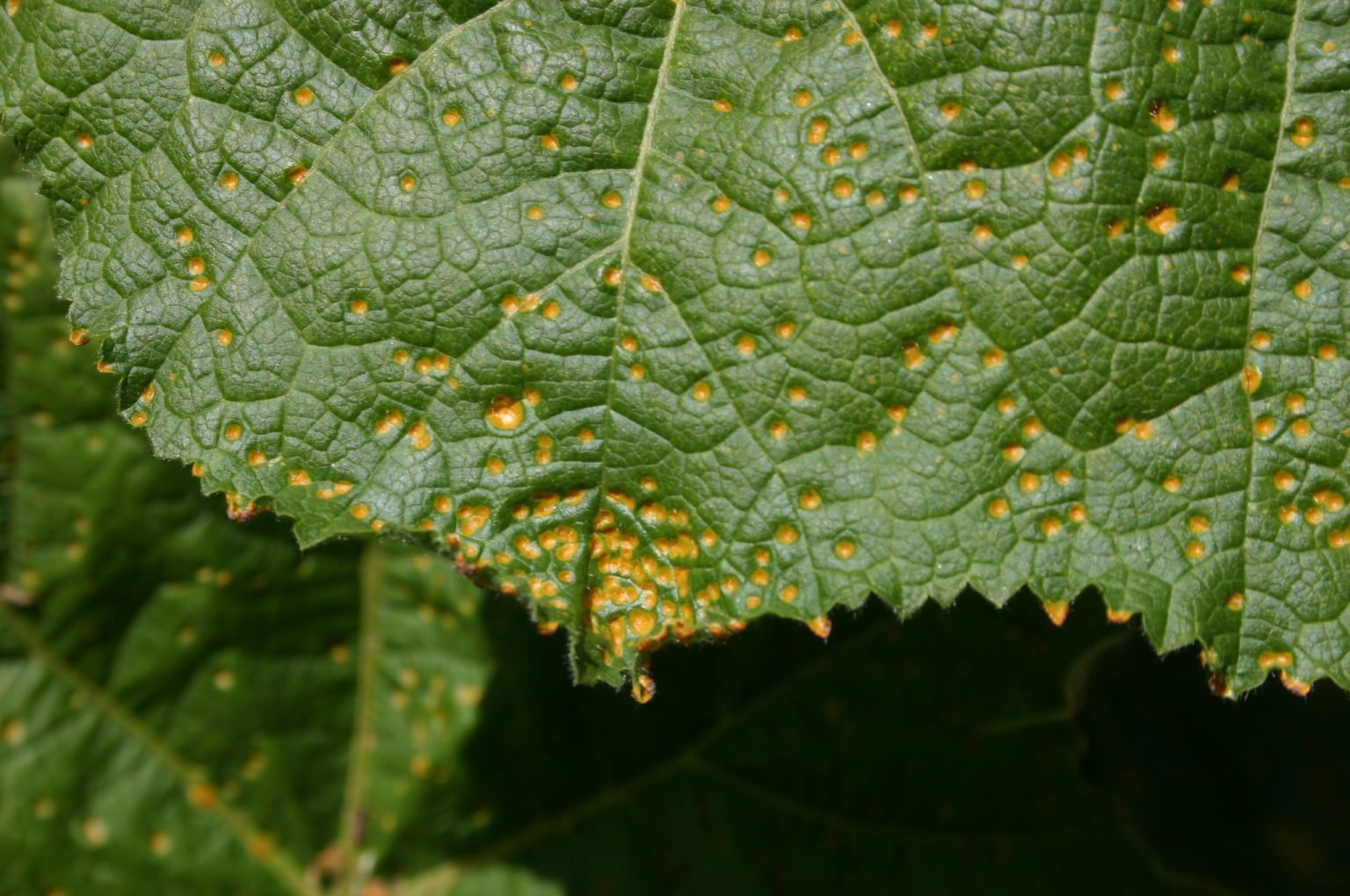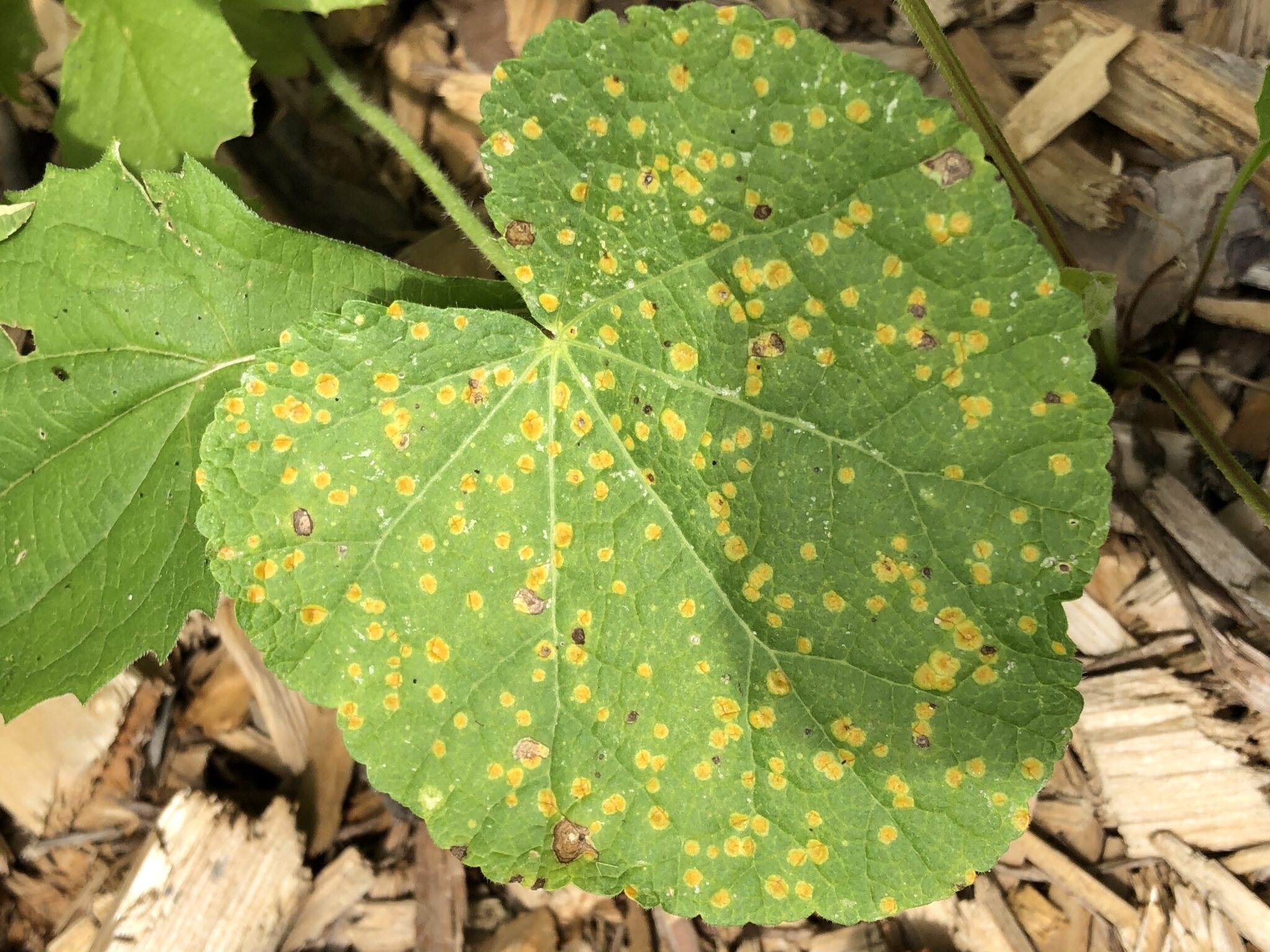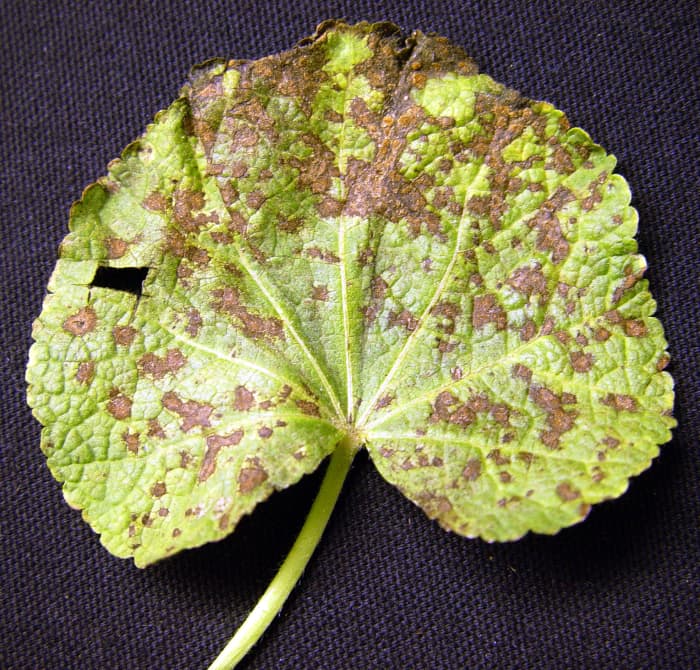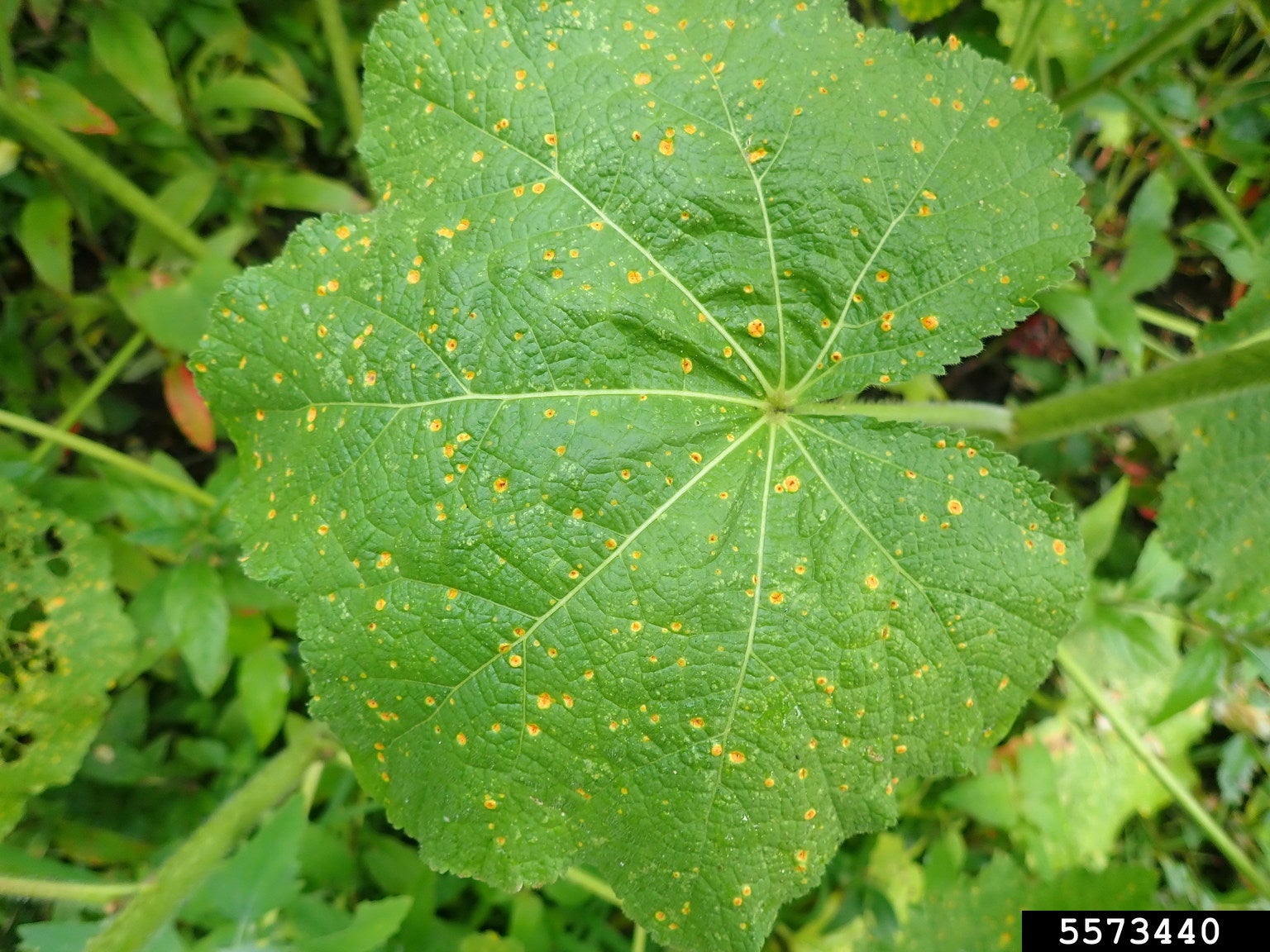What’s Behind the Yellow Spots on Your Hollyhock Leaves?
Hollyhocks are a popular and iconic perennial flower known for their tall, stately spikes of colorful blooms. However, many gardeners have encountered a frustrating problem: yellow spots on hollyhock leaves. These unsightly spots can be caused by a variety of factors, including pests, diseases, and environmental stressors. In this article, we will explore the common causes of yellow spots on hollyhock leaves and provide guidance on how to identify and address the underlying issue.
Yellow spots on hollyhock leaves can be a sign of a more serious problem, such as a pest infestation or a fungal disease. If left untreated, these issues can spread quickly and cause significant damage to the plant. On the other hand, some yellow spots may be caused by minor issues, such as nutrient deficiencies or environmental stressors, which can be easily addressed with proper care and attention.
To better understand the issue of yellow spots on hollyhock leaves, it’s essential to consider the plant’s growing conditions and any potential stressors that may be affecting its health. Hollyhocks prefer well-draining soil and full sun to partial shade. They are also sensitive to extreme temperatures, drought, and excessive watering. By understanding these factors, gardeners can take steps to prevent yellow spots from occurring in the first place.
In the following sections, we will delve deeper into the common causes of yellow spots on hollyhock leaves, including pests, diseases, nutrient deficiencies, and environmental stressors. We will also provide guidance on how to identify and treat these issues, as well as offer tips on how to prevent yellow spots from occurring in the future.
By the end of this article, readers will have a comprehensive understanding of the causes of yellow spots on hollyhock leaves and the steps they can take to address the issue. Whether you’re a seasoned gardener or just starting out, this information will help you to keep your hollyhocks healthy and thriving.
How to Identify the Cause of Yellow Spots on Hollyhock Leaves
Identifying the cause of yellow spots on hollyhock leaves requires a thorough inspection of the plant and its growing conditions. To start, examine the leaves carefully for any signs of pests, diseases, or nutrient deficiencies. Look for tiny eggs, larvae, or actual pests on the underside of the leaves or on the stems.
Next, inspect the stems and soil for any signs of disease or nutrient deficiencies. Check for any soft or mushy spots on the stems, which can indicate a fungal disease. Also, examine the soil for any signs of nutrient deficiencies, such as a lack of nitrogen or iron.
When inspecting the leaves, look for any patterns or shapes that can indicate the cause of the yellow spots. For example, if the yellow spots are circular and have a powdery texture, it may indicate a fungal disease such as powdery mildew. On the other hand, if the yellow spots are irregularly shaped and have a sticky substance on them, it may indicate a pest infestation such as aphids or whiteflies.
In addition to inspecting the plant itself, also consider the growing conditions. Check the soil moisture and pH levels to ensure they are within the optimal range for hollyhocks. Also, check the temperature and humidity levels to ensure they are not extreme.
By following these steps, you can gather valuable information about the cause of the yellow spots on your hollyhock leaves. This information will help you to determine the best course of action to take to address the issue and prevent future occurrences.
Some common signs to look for when inspecting hollyhock leaves include:
- Yellow or white powdery patches on the leaves, which can indicate a fungal disease such as powdery mildew.
- Small, soft-bodied insects on the underside of the leaves or on the stems, which can indicate a pest infestation such as aphids or whiteflies.
- Irregularly shaped yellow spots on the leaves, which can indicate a nutrient deficiency such as nitrogen or iron.
- Soft or mushy spots on the stems, which can indicate a fungal disease such as root rot.
By being aware of these common signs and taking the time to inspect your hollyhock leaves carefully, you can identify the cause of the yellow spots and take action to address the issue.
Pests That Can Cause Yellow Spots on Hollyhock Leaves
Hollyhocks are susceptible to various pests that can cause yellow spots on their leaves. Some of the most common pests that can infest hollyhocks include aphids, whiteflies, and spider mites.
Aphids are small, soft-bodied insects that feed on the sap of hollyhock leaves. They can cause yellow spots to form on the leaves, as well as curled or distorted leaves. Aphids can also transmit plant viruses, which can further damage the plant.
Whiteflies are tiny, winged insects that feed on the sap of hollyhock leaves. They can cause yellow spots to form on the leaves, as well as a sticky substance called honeydew to form on the leaves and stems. Whiteflies can also transmit plant viruses, which can further damage the plant.
Spider mites are tiny, spider-like insects that feed on the sap of hollyhock leaves. They can cause yellow spots to form on the leaves, as well as fine webbing to form on the leaves and stems. Spider mites can also cause the leaves to become bronzed or stippled.
Other pests that can infest hollyhocks and cause yellow spots on the leaves include caterpillars, beetles, and thrips. These pests can cause damage to the leaves and stems of the plant, as well as transmit plant viruses.
To manage pest infestations on hollyhocks, it’s essential to monitor the plants regularly for signs of pests. Inspect the leaves and stems for any signs of pests, such as eggs, larvae, or actual pests. Use organic or chemical pesticides as needed to control pest infestations.
Some common signs of pest infestations on hollyhocks include:
- Yellow or white spots on the leaves, which can indicate aphid or whitefly infestations.
- Curled or distorted leaves, which can indicate aphid or caterpillar infestations.
- Sticky substance on the leaves and stems, which can indicate whitefly infestations.
- Fine webbing on the leaves and stems, which can indicate spider mite infestations.
By being aware of these common signs and taking action to manage pest infestations, you can help prevent yellow spots from forming on your hollyhock leaves.
Fungal Diseases That Can Cause Yellow Spots on Hollyhock Leaves
Fungal diseases are a common cause of yellow spots on hollyhock leaves. These diseases can be caused by a variety of fungi, including powdery mildew, leaf spot, and rust. In this section, we will discuss the symptoms, causes, and treatment options for each of these diseases.
Powdery mildew is a fungal disease that causes a white, powdery coating to form on the leaves of hollyhocks. This coating can cause the leaves to become yellow or distorted, and can also lead to a reduction in plant growth. Powdery mildew is typically caused by high humidity and warm temperatures, and can be treated with fungicides or by removing infected leaves.
Leaf spot is a fungal disease that causes small, circular spots to form on the leaves of hollyhocks. These spots can be yellow, brown, or black, and can cause the leaves to become distorted or drop off. Leaf spot is typically caused by excessive watering or high humidity, and can be treated with fungicides or by removing infected leaves.
Rust is a fungal disease that causes orange or yellow spots to form on the leaves of hollyhocks. These spots can cause the leaves to become distorted or drop off, and can also lead to a reduction in plant growth. Rust is typically caused by high humidity and warm temperatures, and can be treated with fungicides or by removing infected leaves.
To prevent fungal diseases from causing yellow spots on hollyhock leaves, it’s essential to maintain good garden hygiene. This includes removing infected leaves, avoiding excessive watering, and providing good air circulation around the plants. Fungicides can also be used to treat fungal diseases, but should be used with caution and in accordance with the manufacturer’s instructions.
Some common signs of fungal diseases on hollyhocks include:
- White, powdery coating on the leaves, which can indicate powdery mildew.
- Small, circular spots on the leaves, which can indicate leaf spot.
- Orange or yellow spots on the leaves, which can indicate rust.
- Distorted or dropped leaves, which can indicate a fungal disease.
By being aware of these common signs and taking action to prevent fungal diseases, you can help prevent yellow spots from forming on your hollyhock leaves.
Nutrient Deficiencies That Can Cause Yellow Spots on Hollyhock Leaves
Nutrient deficiencies can cause yellow spots on hollyhock leaves, particularly if the plant is not receiving enough nitrogen, iron, or magnesium. These essential nutrients play a crucial role in plant growth and development, and a deficiency can lead to a range of problems, including yellow spots on the leaves.
Nitrogen deficiency is one of the most common nutrient deficiencies that can cause yellow spots on hollyhock leaves. Nitrogen is essential for plant growth, and a deficiency can cause the leaves to become yellow or pale. To address a nitrogen deficiency, you can use a nitrogen-rich fertilizer, such as ammonium nitrate or urea.
Iron deficiency is another common nutrient deficiency that can cause yellow spots on hollyhock leaves. Iron is essential for the production of chlorophyll, which gives plants their green color. A deficiency in iron can cause the leaves to become yellow or pale, and can also lead to a range of other problems, including stunted growth and reduced yields. To address an iron deficiency, you can use an iron-rich fertilizer, such as iron sulfate or iron chelate.
Magnesium deficiency is also a common nutrient deficiency that can cause yellow spots on hollyhock leaves. Magnesium is essential for plant growth, and a deficiency can cause the leaves to become yellow or pale. To address a magnesium deficiency, you can use a magnesium-rich fertilizer, such as magnesium sulfate or magnesium chelate.
To diagnose a nutrient deficiency, you can perform a soil test to determine the nutrient levels in the soil. You can also examine the leaves for signs of nutrient deficiencies, such as yellow spots or pale color. If you suspect a nutrient deficiency, you can use a fertilizer that is rich in the deficient nutrient to address the problem.
Some common signs of nutrient deficiencies on hollyhocks include:
- Yellow or pale leaves, which can indicate a nitrogen or iron deficiency.
- Stunted growth, which can indicate a magnesium deficiency.
- Reduced yields, which can indicate a nutrient deficiency.
- Leaf drop, which can indicate a nutrient deficiency.
By being aware of these common signs and taking action to address nutrient deficiencies, you can help prevent yellow spots from forming on your hollyhock leaves.
Environmental Stressors That Can Cause Yellow Spots on Hollyhock Leaves
Environmental stressors can also cause yellow spots on hollyhock leaves. These stressors can include extreme temperatures, drought, and excessive watering. When hollyhocks are exposed to these stressors, they can become weakened and more susceptible to disease and pests.
Extreme temperatures can cause yellow spots on hollyhock leaves. If the temperature is too high or too low, it can cause the leaves to become scorched or discolored. For example, if the temperature is above 90°F (32°C), it can cause the leaves to become yellow or brown.
Drought can also cause yellow spots on hollyhock leaves. When hollyhocks do not receive enough water, they can become stressed and develop yellow spots on their leaves. It is essential to water hollyhocks regularly, especially during hot and dry weather.
Excessive watering can also cause yellow spots on hollyhock leaves. When hollyhocks receive too much water, it can cause the roots to rot and the leaves to become yellow or brown. It is essential to avoid overwatering hollyhocks and to ensure that the soil drains well.
To mitigate environmental stressors, it is essential to provide hollyhocks with the right growing conditions. This includes providing them with full sun to partial shade, well-draining soil, and regular watering. It is also essential to monitor the temperature and to protect hollyhocks from extreme temperatures.
Some common signs of environmental stressors on hollyhocks include:
- Yellow or brown leaves, which can indicate extreme temperatures or drought.
- Wilting or droopy leaves, which can indicate excessive watering or drought.
- Leaf drop, which can indicate extreme temperatures or drought.
- Reduced growth, which can indicate environmental stressors.
By being aware of these common signs and taking action to mitigate environmental stressors, you can help prevent yellow spots from forming on your hollyhock leaves.
Treatment Options for Yellow Spots on Hollyhock Leaves
Once you have identified the cause of the yellow spots on your hollyhock leaves, you can begin to treat the problem. The treatment options will depend on the underlying cause of the yellow spots, but here are some general guidelines:
For pest infestations, such as aphids, whiteflies, and spider mites, you can use organic or chemical pesticides to control the population. Neem oil, insecticidal soap, and horticultural oil are all effective organic pesticides that can be used to control pests on hollyhocks.
For fungal diseases, such as powdery mildew, leaf spot, and rust, you can use fungicides to control the spread of the disease. Copper-based fungicides, sulfur-based fungicides, and chlorothalonil-based fungicides are all effective against fungal diseases on hollyhocks.
For nutrient deficiencies, such as nitrogen, iron, and magnesium deficiencies, you can use fertilizers to provide the necessary nutrients to the plant. Balanced fertilizers, such as 10-10-10, can provide all the necessary nutrients for healthy plant growth.
For environmental stressors, such as extreme temperatures, drought, and excessive watering, you can take steps to mitigate the stressors. Providing shade, watering regularly, and avoiding overwatering can all help to reduce stress on the plant.
Preventing future occurrences of yellow spots on hollyhock leaves requires regular monitoring of the plant and taking action at the first sign of trouble. Regularly inspecting the leaves, stems, and soil for signs of pests, diseases, or nutrient deficiencies can help to identify problems early, and taking action quickly can prevent the problem from becoming more serious.
Some additional tips for preventing yellow spots on hollyhock leaves include:
- Providing good air circulation around the plant to prevent fungal diseases.
- Watering regularly, but avoiding overwatering, to prevent root rot and other problems.
- Fertilizing regularly to provide necessary nutrients for healthy plant growth.
- Pruning regularly to promote healthy growth and prevent disease.
By following these tips and taking action quickly when problems arise, you can help to prevent yellow spots on your hollyhock leaves and keep your plants healthy and thriving.
Preventing Yellow Spots on Hollyhock Leaves in the Future
Preventing yellow spots on hollyhock leaves requires a combination of good gardening practices and regular monitoring of the plant. By following these tips, you can help to prevent yellow spots from occurring in the future:
Soil Preparation: Hollyhocks prefer well-draining soil that is rich in organic matter. Adding compost or well-rotted manure to the soil can help to improve its structure and fertility.
Watering: Hollyhocks need regular watering, but make sure not to overwater. Check the soil regularly to ensure it is not too dry or too wet.
Pruning: Prune hollyhocks regularly to promote healthy growth and prevent disease. Remove any dead or damaged leaves or stems, and cut back the plant to encourage new growth.
Monitoring: Regularly inspect the plant for signs of pests, diseases, or nutrient deficiencies. Take action quickly if you notice any problems, and consider using preventative measures such as pesticides or fungicides.
By following these tips, you can help to prevent yellow spots on your hollyhock leaves and keep your plants healthy and thriving.
Some additional tips for preventing yellow spots on hollyhock leaves include:
- Providing good air circulation around the plant to prevent fungal diseases.
- Using physical barriers, such as fine mesh or fine netting, to prevent pests from reaching the plant.
- Using organic or chemical pesticides, fungicides, and fertilizers as needed to control pests and diseases.
- Keeping the area around the plant free of debris and weeds, which can harbor pests and diseases.
By taking these preventative measures, you can help to ensure your hollyhocks remain healthy and free of yellow spots.


